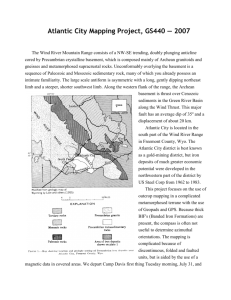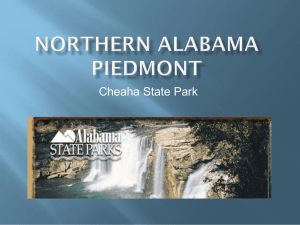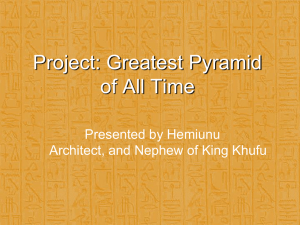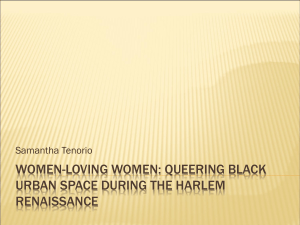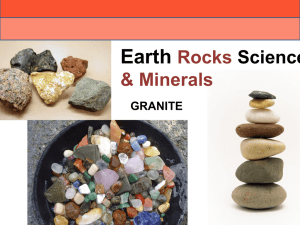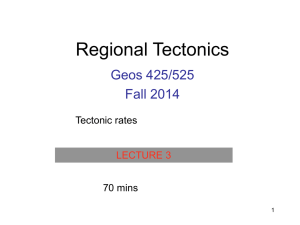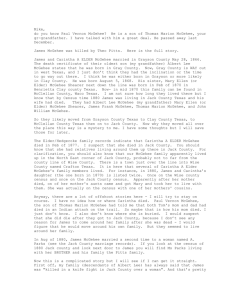Grenville Basement Igneous & Metamorphic Rocks of the Llano Uplift
advertisement
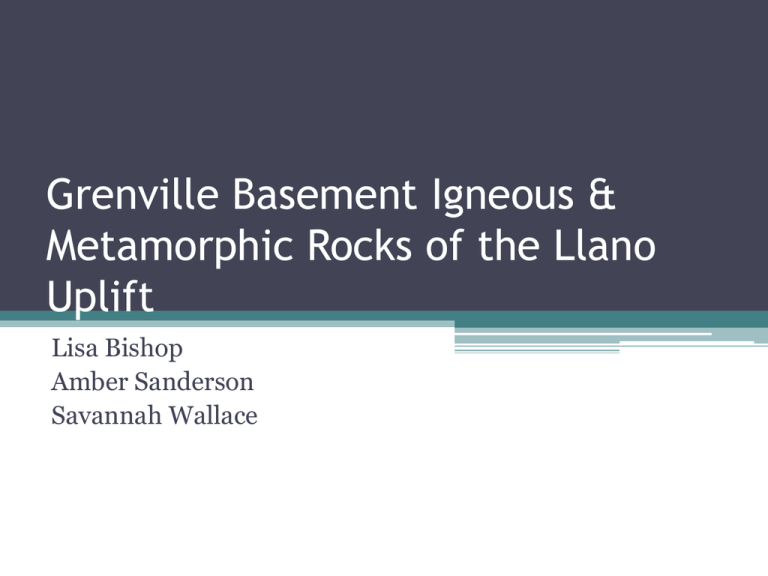
Grenville Basement Igneous & Metamorphic Rocks of the Llano Uplift Lisa Bishop Amber Sanderson Savannah Wallace What? When? Where? • In central and west Texas exposures of the Grenville Orogeny record 300my of tectonic activity and metamorphism along the Laurentian margin. • The Llano uplift represents a structural dome that is precambrian in age. • On a regional scale it would look like an island of igneous rock surrounded by earlier sedimentary structures (McGehee). Mosher, 1998 Geologic Map of Texas utexas.edu The Rocks Granites Packsaddle Schist http://uts.cc.utexas.edu/~rmr/images/LLmggrn-256.jpg http://facweb.bhc.edu/academics/science/harwoodr/geol101/labs/metamorf/images/Meta01.jpg Pelitic Schist http://uts.cc.utexas.edu/~rmr/images/nonporph.jpg Precambrian Units of Llano Uplift • Units of the Llano uplift include sediments, lavas, and pyroclastics (McGehee, 1979). • Rock History includes metamorphism, folding, faulting, and intrusion. • Total Thickness: 28,000 ft • Major Units: ▫ Valley Spring Gneiss ▫ Packsaddle Schist ▫ Town Mountain Granite http://www.tpwd.state.tx.us/backgrounds/images/erock_bg.jpg Geologic Map of Llano Uplift Mosher, 2008 Metamorphic and Tectonic Origins • High Temperature-Low Pressure metamorphism produced by Convergent Subduction at margin. • Uplift and Retrotransport produced by later subduction of continental crust (Mosher,2008). • Upwelling of Asthenosphere produced granite intrusions (Mosher, 2008). • Facies are predominatley almondineamphibolite with pyroxene and hornfels near the intrusions (McGehee). Tectonic Evolution • Llano is a part of the southern margin of Laurentia • This area is a part of the Grenville orogenic belt that extends from Texas to Scandinavia. • A continent-continent collision occurred inducing metamorphism and pushing up existing rock. • A shear zone is developed between the Valley Springs and Packsaddle Formations. • Cambrian seas deposited sediment in the area that was later eroded. • The basement rock was then uplifted. Mosher, 2008 Structural Elements • Llano Uplift is a broad structural dome in central Texas with 2 to 3 km of structural relief. (Mosher, 1998) • During orogeny the area is folded into long anticlines and synclines. • Thrust faults are present • Metamorphism in the area occurred at high temperatures but at a moderate depth. • Foliations are parallel to original bedding • Lineations are parallel to major fold axes Subsurface View of Llano Uplift • The sills intruded before metamorphism was complete. • Granite intrusions pushed into the surrounding rock to create tighter folds. • 3 major faults span the area http://hlmn.281.com/march/uplift.htm The Nonconformity of Town Mountain Granite Allison, 2014 Llano Supergroup • Precambrian (2.5 Ga - 542 Ma) • Igneous to Metamorphic Rocks • 3 major Groups that cover 75% of the area ▫ Valley Spring Gneiss ▫ Packsaddle Schist ▫ Town Mountain Granite • The Packsaddle Schist Group is subdivided into 4 unique lithological formation ▫ ▫ ▫ ▫ Honey Formation Sandy Formation Rough Ridge Formation Click Formation Llano Supergroup McGehee, 1979 Valley Spring Gneiss • Core of the Babyhead anticline • Metamorphosed intrusive igneous rocks • Paragenesis is the primary rock type • Alternating layers of pink quartz-feldspar gneiss and biotite gneiss • Contains altered limestones • Gradational upper contact with the Packsaddle Schist containing biotite and amphibole schist • Thickness totals 8,480 ft. Mohr, 1983 Packsaddle Schist • Dominantly feldspathic amphibole and biotite schists that are dark in color • Lower contact contains quartzfeldspar schist • Contains 4 formations (oldest to youngest) ▫ Honey- graphite, hornblende, muscovite schist and marble ▫ Sandy-alternating units of hornblende schist, and quartzfeldsparpmica schist ▫ Rough-gray leptite, qtz-feldsparmica schist, and biotite-cordierite gneiss ▫ Click-hornblende schist, underlain by leptite and qtz-feldspar-mica schist • Thickness totals 20,00 ft. Mohr, 1983 Town Mountain Granite • Formed due to a magmatic intrusion • Coarse-grained, pink, quartz-plagioclase-microcline rock, in part porphyritic with large microcline phenocrysts. • Occurs in plutons up to 13 mi in size • Xenoliths comprised of metamorphic minerals (tourmaline, wollastonite, idocrase, andalusite, sillimanite, cordierite, muscovite, and biotite) from the Valley Spring Gneiss and Packsaddle Schist due to intrusive magma • Gradational lower contact with the Packsaddle Schist • Nonconformity located between the Town Mountain Granite and the Packsaddle Schist Enchanted Rock Batholith Town Mountain Granite Mohr, 1983 References • McGehee, Richard V. 1979. PreCambrian Rocks of the Southeastern Llano Region, Texas. Bureau of Economic Geology Geological Circular v.79 #3 • Clabaugh, S.E. and McGehee, R.V. *See Wayne for further info. • Mosher, S. Levine, J.S.F. and Carlson, W.D. 2008. Mesoproterozoic plate tectonics: A collisional model for the Grenville-aged orogenic belt in the Llano uplift, central Texas. The Geological Society of America v36 #1:55-58. • Mosher, Sharon. 1998. Tectonic evolution of the southern Laurentian Grenville orogenic belt. GSA Bulletin v 110 #11: 1357-1375. • Barnes, Virgil E. 1988. The Precambrian of Central Texas. Geological Society of America Centennial Field Guide South-Central Section v82: 361-368. A Special Thanks to Anna Garrett and Jennifer Jerkins.

